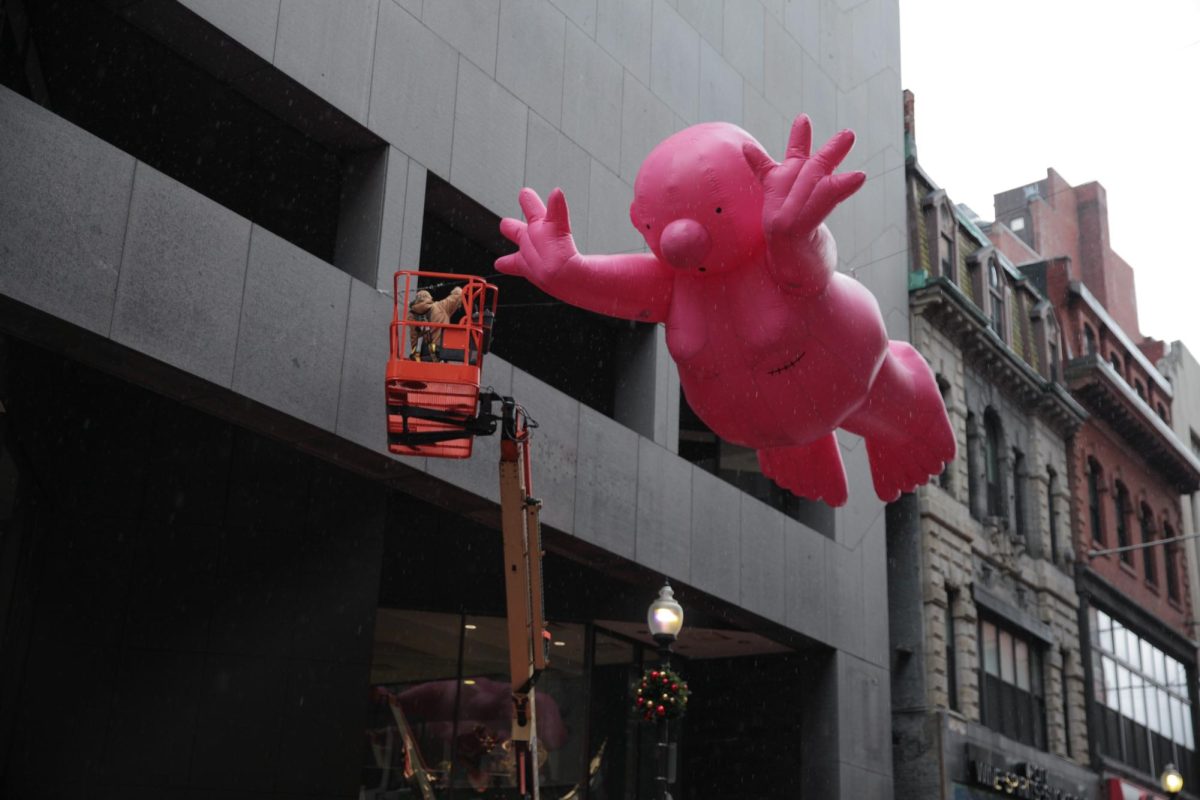
By Patrick Morey, News Correspondent
Unforgivingly obscene yet filled with hilarity and earnest explorations into the human psyche, “The Wolf of Wall Street” is one of nine films nominated for Best Picture in this year’s Academy Awards.
Director Martin Scorsese and actor Leonardo DiCaprio’s fifth collaboration is a dramatized recount of stockbroker Jordan Belfort’s autobiography of the same title. The autobiography tells the story of his meteoric rise and bleak downfall of the founder of Wall Street brokerage firm Stratton Oakmont.
The film follows Belfort (DiCaprio) from his humble beginnings making cold calls to potential stock investors to his greatest heights as one of Wall Street’s most powerful and successful brokers. While at the top, Stratton Oakmont functions as a frat house as much as it does a business. Belfort and his colleagues abuse profuse amounts of drugs – with a preference towards cocaine and Quaaludes – and entertain an endless parade of prostitutes, circus members and even a chimpanzee in a suit. Belfort eventually realizes, though, that maintaining this lifestyle is much harder than it appears.
Though the corrupt influence of greed drives the plot of “The Wolf of Wall Street,” the heart of the film lies within its illumination of the demons that confront those afflicted by addiction. For Belfort, addiction is not limited to just one vice, as he chases after drugs, women and money – anything to bring him temporary satisfaction while he desperately searches for his next fix.
Belfort only finds happiness in continuous consumption of these vices, creating a vicious cycle in which he needs to be constantly getting richer, higher or more licentious just to maintain his sanity. The problem with that lifestyle, however, is that the desensitization after each excursion into debauchery makes it increasingly difficult to find any semblance of happiness. Belfort confronts this dilemma head on, just as any person who falls prey to addiction does every day.
Addiction is not only seen through the lens of Belfort’s behavior, but also manifests in Scorsese’s brilliant direction of the film. The development of the film’s tone mirrors the development of an addiction.
First there is pure excitement, as seen by Belfort’s invigorating rise to Wall Street success. This success means joyous celebrations in Stratton Oakmont’s offices. As time goes on and the festivities are repeated over and over to the point of exhaustion, what was once exhilarating is now vapid.
Some critics, such as Variety’s news editor Whitney Friedlander, view this portrayal of overindulgence as glorifying the criminal and immoral actions of these Wall Street brokers. Friedlander claims that Belfort’s actions in the film serve as “a celebration of this lifestyle.”
His interpretation only looks at the surface of the movie – which certainly does contain a bounty of drug use, nudity and sex – rather than the deeper message the film attempts to convey. When viewed as a tool to aid in capturing the complexities of addiction, the supposed glorification of wanton behavior allows Scorsese to effectively share his exploration of this affliction with his audience.
This film’s greatest achievement, however, is undoubtedly the acting performance of DiCaprio, who merited an Oscar nomination for Best Actor in a Leading Role.
He successfully captures the essence of Belfort at each stage of his career and personal life, beginning as a naïve stockbroker’s assistant, peaking as the fearless leader of one of Wall Street’s most successful brokerage firms and ultimately ending as a disgraced convict guilty of stock market fraud, spending 22 months in prison.
From delivering passionate, rousing speeches aimed at his fellow employees to surviving hilarious drug-induced stupors and struggles with marital disintegration, Leo displays the gamut of human emotions over the course of three hours without sacrificing entertainment value at any moment. If he were ever to win his first Academy Award, his performance in this film would certainly be worthy of such an honor.
Though Leo’s performance steals the show, Jonah Hill – nominated for the Oscar’s Best Actor in a Supporting Role – and Margot Robbie comprise a superb supporting cast worthy of recognition.
Hill plays Belfort’s eccentric sidekick Donnie Azoff, whose depraved antics, like swallowing an unassuming intern’s pet goldfish, provide comic relief throughout the film and highlight the vileness permeating through these Wall Street offices.
Robbie delivers a breakthrough performance as supermodel Naomi Lapaglia, who marries Belfort and serves as both his muse and the eventual victim of Belfort’s self-involvement. As if these characters were not enough to please moviegoers, a brief cameo from Matthew McConaughey as Belfort’s first mentor Mark Hanna is one of the high points of the film.
“The Wolf of Wall Street” will depart from movie theaters in the coming weeks, so make sure not to miss the opportunity to witness these three full hours of vintage Scorsese direction and an all-time great DiCaprio performance, packed with both dark comedy and heavy drama guaranteed to delight audiences.









